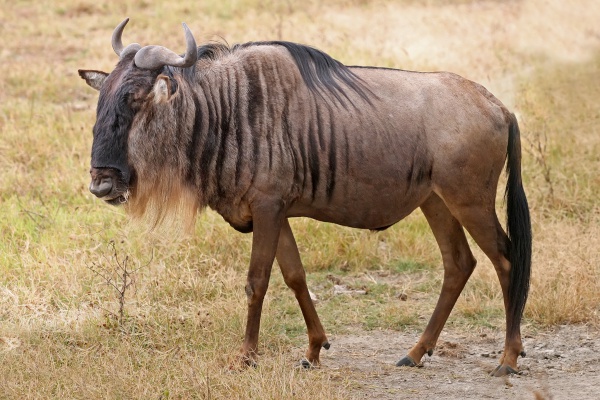Facts About Blue Wildebeest, Brindled Gnu
The blue wildebeest, also known as the common wildebeest, white-bearded wildebeest, or brindled gnu, is a large antelope belonging to the genus Connochaetes in the Bovidae family. These animals are notable for the pronounced size dimorphism between males and females, with males being both larger and darker.
There are five subspecies of blue wildebeest, each inhabiting different regions of southern and eastern Africa. As herbivores, they primarily feed on short grasses and are renowned for their extensive migrations, timed with rainfall patterns to optimize foraging conditions.
Despite facing threats such as predation, disease outbreaks, habitat loss, and disruptions to their migratory routes due to human activities, blue wildebeests are currently classified as "Least Concern" by the International Union for Conservation of Nature (IUCN). Their population is estimated at around 1.5 million and is considered stable.
Blue wildebeests play a crucial ecological role as major herbivores within their ecosystems. They support large predators and are a significant attraction for wildlife tourism. Economically, they have been important for hunting, providing hides and meat. Nevertheless, they can sometimes compete with livestock for resources and can transmit diseases to domestic animals.
Interestingly, archaeological evidence suggests that blue wildebeests may have once roamed North Africa in ancient times. Their presence today continues to be a vital part of Africa’s natural heritage and economy.

 Zimbabwe
Zimbabwe